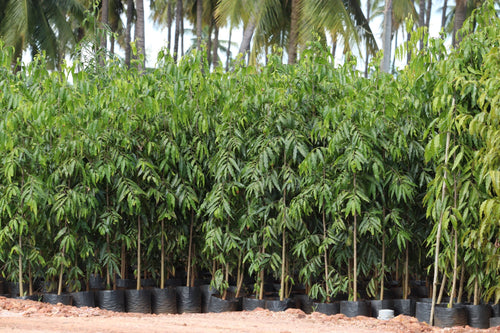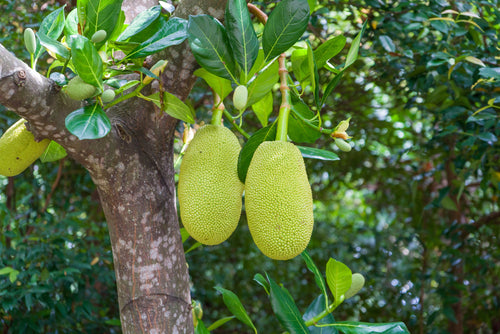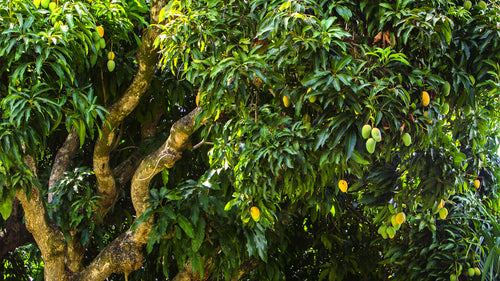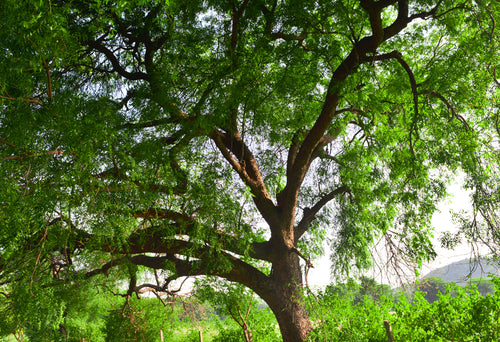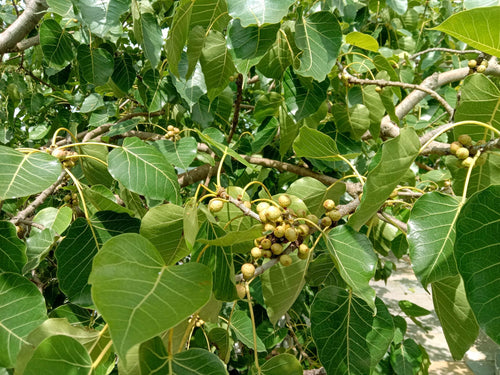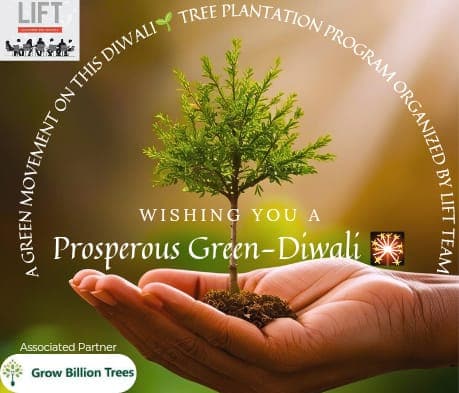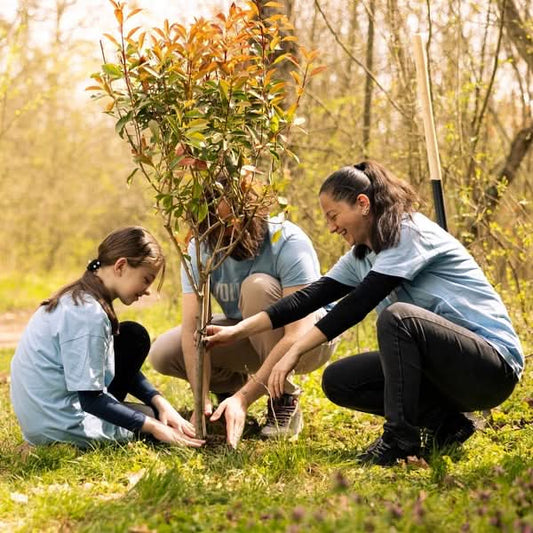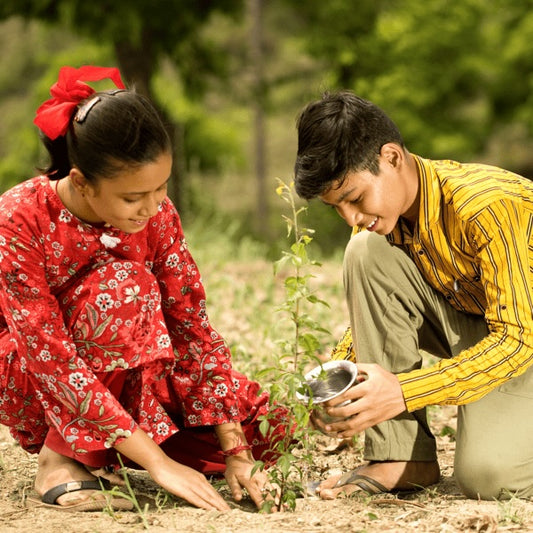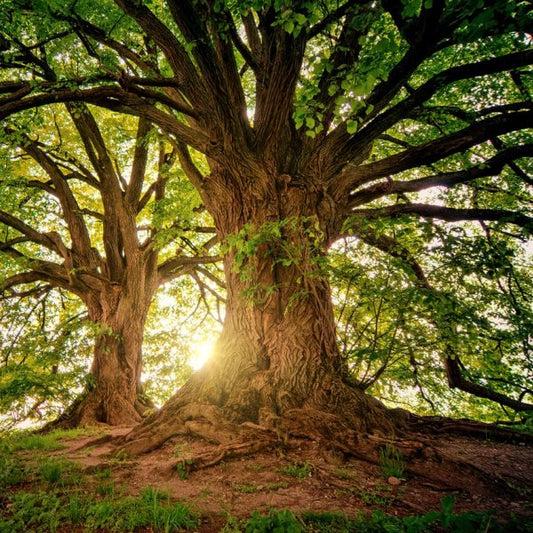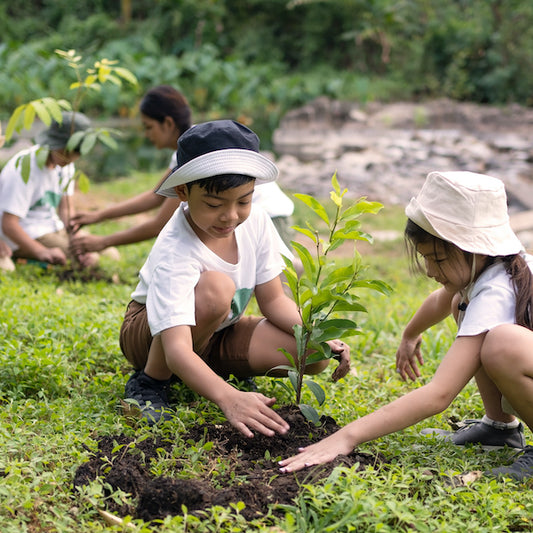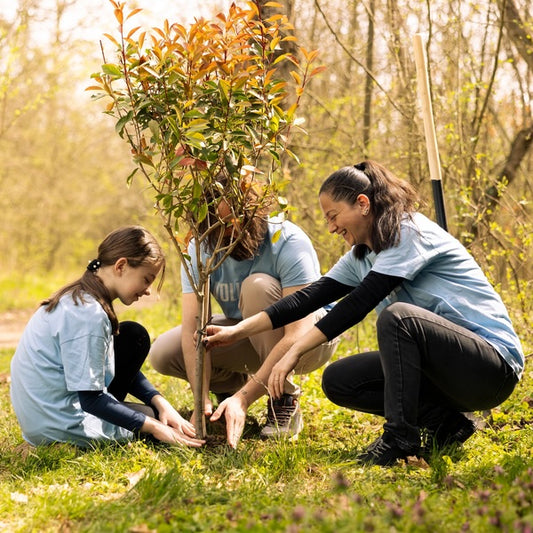Shaping Tomorrow: Panasonic Green Impact Pledge
At Panasonic, sustainability is more than a goal; it’s a way of life. As part of their unwavering commitment to building a carbon-neutral future, they Read more
Project Update 2
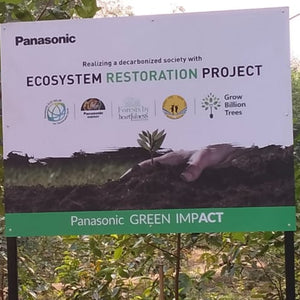
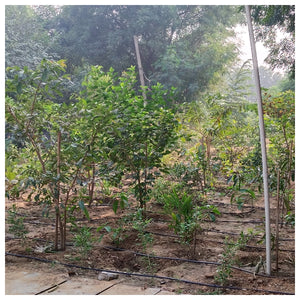
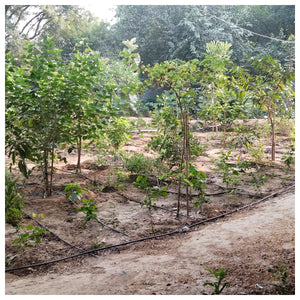
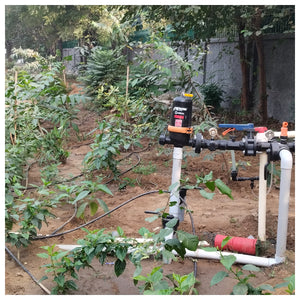
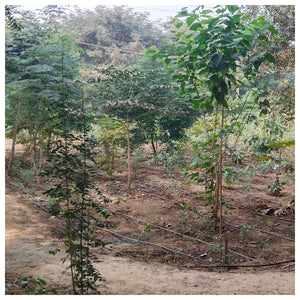

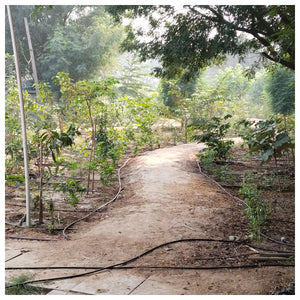
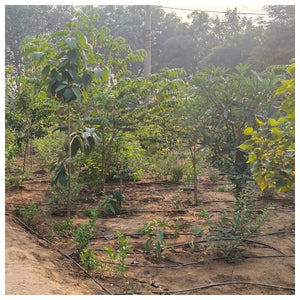
Project Update 1

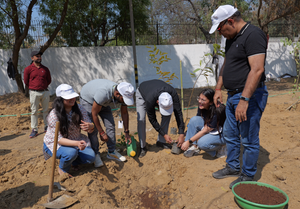
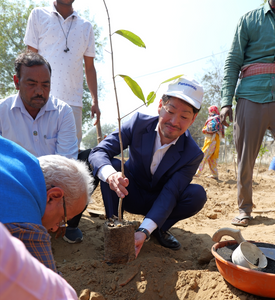
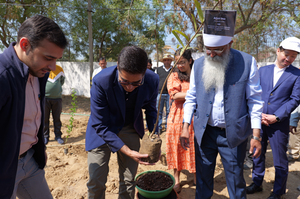
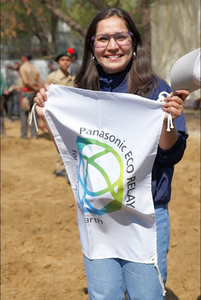
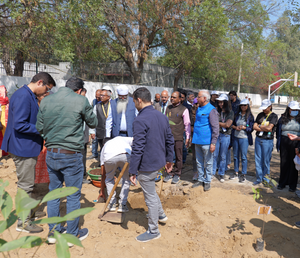

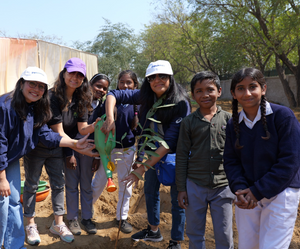
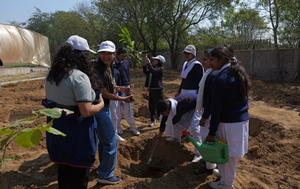
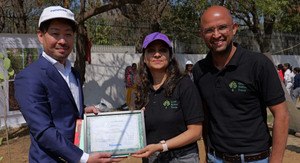
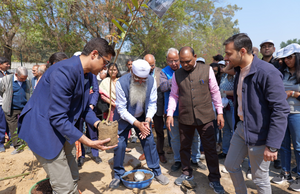
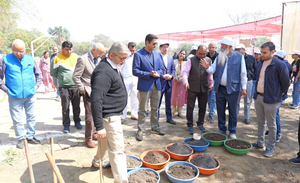
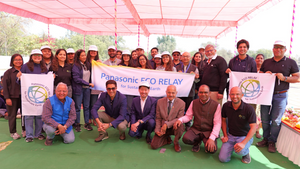

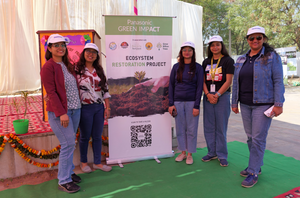

Digital Forest
Forest with 11,000 Trees planned
Want to plant your tree now?
Plant a Tree @ 299Shaping Tomorrow: Panasonic Green Impact Pledge
At Panasonic, sustainability is more than a goal; it’s a way of life. As part of their unwavering commitment to building a carbon-neutral future, they are actively reducing CO₂ emissions across homes, towns, mobility, and supply chains. One of their most impactful initiatives in this journey is a large-scale tree plantation project in Delhi, in collaboration with Heartfulness and Grow Billion Trees.
This transformative initiative aims to plant 11,000 trees at the Government Sarvodaya Senior Secondary School in Daulatpura, creating an urban forest that restores local ecosystems and empowers young minds. Trees are nature’s climate warriors, filtering the air, nurturing biodiversity, and healing the planet. But their impact doesn’t stop at the environment. These green companions will become living classrooms for students from 48 nearby Delhi government schools, offering hands-on education in sustainability and nature conservation.
What makes this project even more powerful is the deep employee engagement it fosters. Panasonic employees didn’t just plant trees; they planted purpose. Through their direct participation in this plantation drive, they strengthened their bond with the planet, the community, and each other. This act of environmental stewardship instilled a stronger sense of responsibility and ownership in their collective mission toward sustainability.
To recognize their contribution, tree certificates were awarded to employees and management by Grow Billion Trees, symbolizing Panasonic’s spirit of collective action and shared responsibility.
This initiative is also part of the Panasonic Eco Relay for a Sustainable Earth, a global movement that encourages green innovation and community participation. The urban forest at Daulatpura will evolve into a vibrant green hub with butterfly zones, herb gardens, and learning stations that foster biodiversity and spark environmental curiosity among students.
With this tree plantation initiative, Panasonic is making a tangible difference in creating a sustainable urban environment. This effort also aligns with the global Panasonic Eco Relay for a Sustainable Earth initiative, designed to cultivate lush urban forests in collaboration with local communities.
By merging corporate action with community impact, Panasonic is not only cultivating green spaces but also shaping a greener mindset. This initiative reflects their broader sustainability roadmap:
-
Achieving Carbon Neutrality by 2030 through zero-carbon factories and renewable energy
-
Developing energy-efficient products to reduce customer footprints
-
Championing partnerships that build resilient, eco-conscious societies
With every tree they plant, they reaffirm the belief that a sustainable future starts today, with actions that leave a legacy.
Project Planning & Execution
No of Trees: 11,000
Plantation Location: Government Sarvodaya Senior Secondary School, Daulatpur, Delhi, 110043
Plantation Date: 28th February 2024
Name of Species: Mango, Banyan, Peepal, Jackfruit, Ashoka, Neem, Gudhal, Gulmohar, Jamun, Shisham
Species Selection & Its Benefits:
The species chosen for Panasonic's urban forestry initiative were thoughtfully selected to foster ecological balance, enhance community well-being, and provide lasting environmental benefits. The curated mix includes Mango, Banyan, Peepal, Jackfruit, Ashoka, Neem, Gudhal (Hibiscus), Gulmohar, Jamun, and Shisham, each playing a vital role in enriching the local urban ecosystem.
Mango is a beloved native tree known for its dense canopy and delicious fruit, supporting food security and attracting pollinators. Banyan, with its vast aerial roots and large structure, is a keystone species that provides habitat for birds and insects while improving air quality. Peepal, sacred and oxygen-rich, is recognized for its ability to purify the air and thrive in urban pollution. Jackfruit offers high-yield fruit and contributes to nutrition and biodiversity.
Ashoka, a symbol of peace, is often planted for its lush foliage and elegant appearance, making it ideal for beautifying public spaces. Neem, celebrated for its medicinal properties and pest-repellent qualities, improves soil health and requires minimal maintenance. Gudhal (Hibiscus) adds vibrant color, supports pollinators like butterflies and bees, and enhances the aesthetic value of green spaces. Gulmohar, with its striking red flowers, is fast-growing and provides excellent shade in urban areas. Jamun, a fruit-bearing tree, supports biodiversity and offers health benefits through its nutrient-rich berries. Shisham (Indian Rosewood), a valuable hardwood species, contributes to long-term carbon sequestration and is resilient in urban conditions.
Together, these species not only combat air pollution and provide urban cooling but also support biodiversity, food security, and cultural heritage. Panasonic’s mindful selection reflects its dedication to creating resilient, multifunctional green spaces that serve both environmental and educational purposes.
Beneficiaries Details
-
Target Population: Employees, stakeholders, and local community members of Daulatpur, Delhi
-
Age Group: All age groups focus on adults to seniors
-
Gender: Inclusive of all genders
- Social & Economic Status: Open to all social and economic backgrounds, emphasizing community involvement
Planting Methodology and Its Advantages
Urban Forestry: An urban forest is a network of trees, shrubs, and vegetation strategically planted in urban areas to enhance biodiversity, improve air quality, reduce the urban heat island effect, and provide green spaces for community well-being. It helps mitigate climate change by absorbing carbon dioxide, promotes mental health through accessible green areas, and supports local wildlife by creating habitats. Urban forests play a vital role in building resilient, sustainable cities that benefit both the environment and the people who live in them.
Advantages of Urban Forestry
-
Climate Regulation and Cooling Effect: Urban forests help mitigate the urban heat island effect by providing shade and cooling through transpiration, lowering temperatures in cities, reducing the need for air conditioning, and conserving energy.
-
Improved Air Quality: Trees absorb pollutants like carbon dioxide, nitrogen oxides, and particulate matter, leading to improved air quality and reducing the risk of respiratory illnesses in urban areas.
-
Stormwater Management and Flood Prevention: Urban forests improve the soil’s ability to absorb and retain water, reducing stormwater runoff, preventing flooding, and promoting groundwater recharge, thus helping manage water resources efficiently.
-
Soil Erosion Control: The deep root systems of trees prevent soil erosion, especially in areas with heavy rainfall or steep slopes, stabilizing the land and reducing soil loss in urban environments.
-
Aesthetic and Recreational Value: The transformation of unused spaces into green zones adds aesthetic value to the area and provides employees and local communities with recreational spaces, making the workplace more enjoyable.
-
Enhanced Community Engagement and Well-being: Urban forests provide accessible green spaces where communities can engage in recreational activities, improving mental health, reducing stress, and fostering a sense of environmental stewardship among residents and employees.
-
Increased Property Value: Properties located near urban forests or green spaces tend to have higher market values, benefiting local property owners and increasing the overall appeal and livability of the area.
- Noise Reduction: Urban forests act as natural sound barriers, reducing noise pollution and creating quieter, more peaceful surroundings.
Activities During Tree Plantation
During Panasonic's tree plantation initiative, the event began with a vibrant and welcoming atmosphere, bringing together employees, community members, and students from local schools, all united by a shared commitment to sustainability. The site, meticulously prepared in advance with dug pits and organized saplings, ensured a seamless and focused planting experience. The occasion was graced by Mr. Manish Sharma, Country Head of Panasonic, and Mr. Akinori Isomura, CMD of Panasonic Energy, who planted the inaugural trees, symbolizing leadership and dedication to environmental restoration. Employees, alongside students and community members, enthusiastically planted saplings, embodying collective action toward creating a greener future. After planting, participants took care to water the young trees, emphasizing the importance of nurturing and sustaining life.
The initiative also became a platform for environmental education, as employees and the co-founders of Grow Billion Trees shared insights on the significance of urban forests, biodiversity, and the role of individual action in combating climate change. This collaborative effort fostered connections among diverse groups, strengthening the bond between employees, the community, and future generations. The event concluded with expressions of gratitude for the active participation of everyone involved, particularly the leadership of Mr. Sharma and Mr. Isomura, and a group photo capturing the spirit of unity and purpose. This memorable initiative not only contributed to ecological restoration but also deepened employee engagement, leaving a lasting impact on all participants.
Conclusion Elements
Impact
Direct Impact
| Parameters | Values | References |
| No. of Trees Planted | 11,000 | |
| Green Cover (Acres) | 1 | |
| Carbon Sequestration Potential (KG) | 20 |
Small to medium-sized trees can sequester around 10–48 kilograms (22–106 pounds) of CO₂ annually. https://growbilliontrees.com/blogs/knowledge/how-much-co2-can-one-tree-absorb |
| Carbon Sequestration by 11,000 mature trees ( Tons/year) | 220 Tons | No. of Trees x Carbon Sequestration by 1 mature trees per year |
| Carbon Credit Equivalent | 220 | One carbon credit is equivalent to one tonne of carbon dioxide or the equivalent amount of another greenhouse gas. |
| Carbon Footprint of an avg Indian Citizen (Tons/Year) | 1.8 | https://www.iea.org/countries/india/emissions |
| Offsets Annual Carbon Footprint of (Adults) | 122 | Carbon offset by 11,000 mature trees per year / Carbon Footprint of an avg Indian Citizen per year |
(This impact analysis is forward-looking (An urban-forest project matures in 3-5 years)
Indirect Impact
Community Impact
-
Improved Public Health: By improving air quality and reducing urban heat, the project indirectly contributes to better public health. The presence of green spaces encourages outdoor activities, which can reduce stress levels, promote mental well-being, and decrease the incidence of respiratory diseases.
-
Environmental Awareness: Involving communities in urban forestry raises awareness about environmental conservation and promotes sustainable practices in daily life.
-
Employee Morale: The initiative fostered a sense of pride and connection among employees, strengthening team bonds and their alignment with the company’s values.
-
Inspiration for Change: By showcasing the potential of urban forestry, the project has encouraged other organizations and local communities to undertake similar initiatives.
- Cultural Shift: The initiative instilled a mindset of sustainability and environmental care among participants, creating advocates for green practices in their personal and professional lives.
Environmental Impact
-
Carbon Sequestration: The trees planted through Panasonic's urban forestry initiative absorb carbon dioxide, acting as carbon sinks and helping mitigate climate change by reducing greenhouse gas emissions.
-
Soil Health Improvement: The tree planting initiative enhances soil health by enriching it with organic matter, improving soil fertility and structure, which supports the growth of surrounding vegetation.
-
Erosion Prevention: Tree roots help stabilize the soil in urban areas, preventing erosion caused by wind and water while safeguarding nearby properties and infrastructure from potential damage.
-
Biodiversity Conservation: By creating green spaces, the initiative supports local biodiversity, providing habitats for various species, pollinators, and beneficial insects, and enhancing the ecological balance in urban areas.
-
Water Cycle Regulation: The urban forestry project helps regulate the water cycle by improving water retention in the soil, recharging groundwater levels, and reducing surface runoff, leading to a more balanced and sustainable urban environment.
- Microclimate Regulation: Trees planted through this initiative moderate temperature extremes, reduce wind speeds, and increase humidity, creating a favourable microclimate for both the community and the urban ecosystem.
Achievements
SDG Goals Achieved through Urban Forestry
-
SDG 3: Good Health and Well-Being – Panasonic's urban forestry project enhances air quality and creates green spaces that promote physical and mental well-being, reducing stress and fostering a healthier urban lifestyle.
-
SDG 4: Quality Education – By transforming the school environment into a hands-on learning space that nurtures environmental literacy among students. It empowers young minds with knowledge and values essential for building a sustainable future.
-
SDG 6: Clean Water and Sanitation – Trees play a crucial role in water conservation by enhancing groundwater recharge, reducing surface runoff, and improving overall water retention. Panasonic's initiative supports sustainable urban water systems through afforestation and green infrastructure.
-
SDG 7: Affordable and Clean Energy – By mitigating the urban heat island effect, Panasonic's tree plantation efforts help lower ambient temperatures and reduce reliance on artificial cooling. The shade provided by trees enhances energy efficiency and promotes a more sustainable urban climate.
-
SDG 8: Decent Work and Economic Growth – The initiative generates employment opportunities in tree planting, maintenance, and ecological restoration, contributing to local economic development and green job creation.
-
SDG 9: Industry, Innovation, and Infrastructure – Panasonic integrates sustainable urban forestry into infrastructure planning, promoting green innovation and enhancing urban resilience.
-
SDG 10: Reduced Inequalities –The initiative ensures inclusivity by engaging employees from diverse backgrounds in environmental conservation. By creating accessible green spaces, Panasonic promotes environmental equity and ensures that all communities, including marginalized groups, benefit from cleaner air, mental well-being, and recreational opportunities.
-
SDG 11: Sustainable Cities and Communities – Panasonic's commitment to urban afforestation contributes to creating more sustainable and resilient cities by increasing green cover, improving air quality, and enhancing urban biodiversity.
-
SDG 12: Responsible Consumption and Production – Panasonic's commitment to sustainability is reflected in its responsible approach to urban forestry, focusing on resource efficiency and long-term environmental benefits.
-
SDG 13: Climate Action – The plantation initiative actively supports climate action by sequestering carbon, reducing greenhouse gas emissions, and mitigating climate change effects through the expansion of green spaces.
-
SDG 15: Life on Land – By restoring green spaces with native and fruit-bearing trees, the initiative strengthens biodiversity, supports wildlife, and contributes to a thriving urban ecosystem.
-
SDG 16: Peace, Justice, and Strong Institutions – By fostering inclusive decision-making and community-led governance, Panasonic strengthens local environmental stewardship, ensuring transparency and collaboration for sustainable urban development.
- SDG 17: Partnerships for the Goals – The initiative thrives on collaboration with local communities, environmental organizations, and partners such as Grow Billion Trees. Panasonic strengthens environmental partnerships to drive impactful urban sustainability and afforestation efforts.
ESG Achieved through Urban Forestry
-
Environmental Impact: Panasonic's urban forestry initiative significantly enhances environmental sustainability. By planting diverse tree species, the company boosts biodiversity, creates habitats for wildlife, and supports local ecosystems. Trees act as carbon sinks, reducing CO2 levels and mitigating climate change. Additionally, the initiative improves urban climate resilience by regulating temperatures, reducing the heat island effect, and enhancing water retention, ensuring long-term ecological health for future generations.
-
Social Impact: Panasonic's urban forestry initiative fosters community engagement and well-being by encouraging local participation in tree planting and environmental awareness. The green spaces created improve air quality, promote physical activity, and enhance public health. The project generates job opportunities in tree planting and maintenance while promoting social equity by ensuring access to green spaces for all, including marginalized groups. These efforts build a more inclusive, resilient, and sustainable community.
- Governance Impact: Panasonic demonstrates strong leadership and commitment to sustainability through its urban forestry initiative. The company ensures transparency and accountability by effectively communicating project plans and outcomes to stakeholders. By collaborating with environmental organizations and local communities, it amplifies the impact of its efforts. This approach aligns with best governance practices, achieving environmental and social goals while promoting long-term sustainable growth.
Building Communities
One of the most impactful outcomes of Panasonic's urban forestry initiative was the sense of unity and collaboration it cultivated. By involving employees, local communities, and volunteers, the project became a collective mission to create sustainable urban green spaces, fostering a shared commitment to a greener future.
-
Empowering Communities: Participants became active contributors, gaining knowledge about urban forestry practices and taking ownership of the initiative. This empowerment strengthened their connection to the environment and reinforced their role as environmental stewards.
-
Fostering Partnerships: The project brought together diverse stakeholders, including Panasonic, Grow Billion Trees, and local communities, highlighting the value of collaboration in achieving environmental and social goals.
-
Creating a Ripple Effect: As communities experienced the benefits of urban forestry, their enthusiasm inspired others to adopt similar practices, amplifying the initiative's positive impact across the region.
This initiative demonstrates that environmental sustainability thrives when rooted in collective effort. It’s not just about planting trees; it’s about planting hope, collaboration, and a shared vision for a healthier and greener future.
Commitment by Grow Billion Trees
Trees for Corporates
Trending
Most Popular
What is Panasonic’s tree plantation initiative? Panasonic’s tree plantation initiative focuses on creating sustainable urban forests to combat climate change and promote biodiversity. Recently, Panasonic planted 25,000 trees at a Delhi Government School in partnership with Grow Billion Trees. This initiative involves employees, students, and local communities in creating green spaces that improve air quality and provide habitats for wildlife. It also serves as a platform for environmental education, inspiring the next generation to adopt sustainable practices.
What is Panasonic’s tree plantation initiative? Panasonic’s tree plantation initiative focuses on creating sustainable urban forests to combat climate change and promote biodiversity. Recently, Panasonic planted 25,000 trees at a Delhi Government School in partnership with Grow Billion Trees. This initiative involves employees, students, and local communities in creating green spaces that improve air quality and provide habitats for wildlife. It also serves as a platform for environmental education, inspiring the next generation to adopt sustainable practices.
How does Panasonic engage employees in its tree plantation initiatives? Panasonic actively involves employees in its tree plantation drives by encouraging them to plant and water saplings. These activities promote teamwork, environmental stewardship, and a sense of purpose. Senior leaders also participate, demonstrating their commitment to sustainability. Through these initiatives, Panasonic fosters a culture of green responsibility among its workforce while contributing to the environment.
How does Panasonic engage employees in its tree plantation initiatives? Panasonic actively involves employees in its tree plantation drives by encouraging them to plant and water saplings. These activities promote teamwork, environmental stewardship, and a sense of purpose. Senior leaders also participate, demonstrating their commitment to sustainability. Through these initiatives, Panasonic fosters a culture of green responsibility among its workforce while contributing to the environment.
What is the impact of Panasonic’s urban forest initiative? Panasonic’s urban forest initiative enhances air quality, reduces urban heat, and boosts biodiversity. It also provides educational benefits, offering students a hands-on learning experience about climate change and sustainability. The initiative aligns with Panasonic’s carbon neutrality goals and helps create healthier, greener cities.
What is the impact of Panasonic’s urban forest initiative? Panasonic’s urban forest initiative enhances air quality, reduces urban heat, and boosts biodiversity. It also provides educational benefits, offering students a hands-on learning experience about climate change and sustainability. The initiative aligns with Panasonic’s carbon neutrality goals and helps create healthier, greener cities.
How does Panasonic’s partnership with Grow Billion Trees work? Panasonic partners with Grow Billion Trees to implement large-scale tree plantation projects. Grow Billion Trees handles site preparation and technical expertise, while Panasonic provides resources and engages employees and communities in planting activities. This collaboration amplifies the impact, turning shared sustainability goals into actionable results.
How does Panasonic’s partnership with Grow Billion Trees work? Panasonic partners with Grow Billion Trees to implement large-scale tree plantation projects. Grow Billion Trees handles site preparation and technical expertise, while Panasonic provides resources and engages employees and communities in planting activities. This collaboration amplifies the impact, turning shared sustainability goals into actionable results.
Why is tree plantation important for Panasonic? Tree plantation is integral to Panasonic’s mission of achieving carbon neutrality by 2030. Trees absorb CO₂, reduce air pollution, and create a healthier environment. Through initiatives like urban forests, Panasonic demonstrates its commitment to sustainability while engaging employees and communities in meaningful environmental action.
Why is tree plantation important for Panasonic? Tree plantation is integral to Panasonic’s mission of achieving carbon neutrality by 2030. Trees absorb CO₂, reduce air pollution, and create a healthier environment. Through initiatives like urban forests, Panasonic demonstrates its commitment to sustainability while engaging employees and communities in meaningful environmental action.
How do Panasonic’s tree plantation efforts contribute to the environment? Panasonic’s tree plantation efforts reduce CO₂ emissions, improve air quality, and combat urban heat. By planting thousands of trees, Panasonic restores ecosystems, promotes biodiversity, and supports climate resilience in urban areas. These efforts align with its goal of creating a sustainable future.
How do Panasonic’s tree plantation efforts contribute to the environment? Panasonic’s tree plantation efforts reduce CO₂ emissions, improve air quality, and combat urban heat. By planting thousands of trees, Panasonic restores ecosystems, promotes biodiversity, and supports climate resilience in urban areas. These efforts align with its goal of creating a sustainable future.
What are the long-term goals of Panasonic’s urban forest initiative? Panasonic’s urban forest initiative aims to create self-sustaining ecosystems that thrive for decades. The company seeks to enhance urban biodiversity, improve public health, and foster environmental education. By involving employees, students, and communities, Panasonic ensures these forests grow as symbols of collective responsibility for the planet.
What are the long-term goals of Panasonic’s urban forest initiative? Panasonic’s urban forest initiative aims to create self-sustaining ecosystems that thrive for decades. The company seeks to enhance urban biodiversity, improve public health, and foster environmental education. By involving employees, students, and communities, Panasonic ensures these forests grow as symbols of collective responsibility for the planet.
How does Panasonic integrate environmental education into its tree plantation initiatives? Panasonic’s tree plantation initiatives double as educational platforms. Students learn about biodiversity, climate change, and sustainability through hands-on experiences, such as planting and caring for trees. These activities inspire young minds to develop innovative solutions for environmental challenges.
How does Panasonic integrate environmental education into its tree plantation initiatives? Panasonic’s tree plantation initiatives double as educational platforms. Students learn about biodiversity, climate change, and sustainability through hands-on experiences, such as planting and caring for trees. These activities inspire young minds to develop innovative solutions for environmental challenges.
What sustainability goals does Panasonic achieve through tree plantations? Through tree plantations, Panasonic achieves goals like carbon neutrality, biodiversity promotion, and environmental education. These efforts also align with UN Sustainable Development Goals, such as Climate Action, Life on Land, and Partnerships for the Goals, reinforcing Panasonic’s global commitment to sustainability.
What sustainability goals does Panasonic achieve through tree plantations? Through tree plantations, Panasonic achieves goals like carbon neutrality, biodiversity promotion, and environmental education. These efforts also align with UN Sustainable Development Goals, such as Climate Action, Life on Land, and Partnerships for the Goals, reinforcing Panasonic’s global commitment to sustainability.
How can communities benefit from Panasonic’s tree plantation initiatives? Communities benefit from cleaner air, reduced urban heat, and improved biodiversity through Panasonic’s tree plantation initiatives. Additionally, these green spaces provide recreational and educational opportunities. By involving local residents in plantation drives, Panasonic fosters a sense of ownership and collective responsibility for maintaining these urban forests.
How can communities benefit from Panasonic’s tree plantation initiatives? Communities benefit from cleaner air, reduced urban heat, and improved biodiversity through Panasonic’s tree plantation initiatives. Additionally, these green spaces provide recreational and educational opportunities. By involving local residents in plantation drives, Panasonic fosters a sense of ownership and collective responsibility for maintaining these urban forests.
FAQ
What are the goals of Panasonic sustainability?
Panasonic GREEN IMPACT initiative is a pledge to reduce the CO2 emissions of thier business operations (Scope 1 and Scope 2 emissions) to net-zero by 2030. Pansocnic will also work to reduce Scope 3 emissions by designing and building products that are even more energy efficient going forward.
What is the purpose of the Panasonic Green Pledge initiative?
Panasonic Green Impact plan involves tackling both its own emissions and encouraging others to decarbonize. Panasonic aims to reduce emissions across our value chain and our customers by more than 300 megatons (Mt) by 2050, as well as to foster new circular economy ventures.
Who are the key collaborators in this initiative?
Panasonic collaborates with Grow Billion Trees and Heartfulness to implement the Green Pledge initiative in Delhi. Heartfulness facilitates tree planting, while Grow Billion Trees contributes to the technology and reporting aspects of the project.
How does tree planting benefit the environment and the community?
Tree planting contributes to ecosystem restoration, improves air quality, mitigates climate change, and provides educational opportunities for students. It also fosters community engagement and awareness about environmental issues.
What are Panasonic's sustainability goals regarding carbon neutrality?
Panasonic aims to achieve net-zero CO₂ emissions across all its operating companies by 2030. This involves increasing the number of zero-CO₂ factories, expanding clean energy usage, and reducing customer emissions through energy-efficient products and solutions.
How can individuals or organizations get involved in the Panasonic Green Pledge initiative?
Individuals and organizations can participate by supporting tree planting efforts, promoting environmental awareness, volunteering for related activities, or collaborating with the initiative's partners.
What measures are in place to ensure the survival and maintenance of the planted trees?
Grow Billion Trees and its partners implement rigorous monitoring and maintenance protocols to ensure the survival and growth of planted trees. This includes regular watering, pruning, and protection against pests and diseases.
How are the achievements and progress of the Green Pledge initiative measured and reported?
The achievements and progress of the initiative are measured through key performance indicators such as the number of trees planted, survival rates, community engagement levels, and educational outcomes. Regular reports and updates are shared with stakeholders and the public.
- Choosing a selection results in a full page refresh.
- Opens in a new window.


